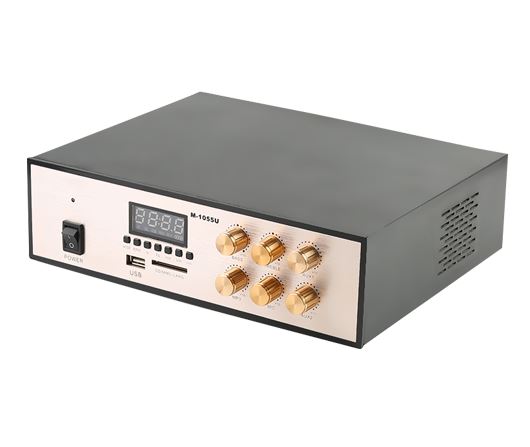Audio amplifiers in public address system can be classified into different categories based on various criteria and have different characteristics:
1.Classification by power:
Low-power amplifiers: with an output power generally below a few watts, mainly used for small occasions such as meeting rooms and classrooms.
Medium-power amplifiers: with an output power between a few watts to tens of watts, suitable for medium-sized occasions such as theaters and halls.
High-power amplifiers: with an output power above tens of watts, suitable for large occasions such as sports venues and concerts.

2.Classification by working mode:
Class A amplifier: works with current always present, with lower efficiency but less distortion.
Class B amplifier: works only when the signal is positive, with higher efficiency but more distortion.
Class AB amplifier: a combination of class A and class B amplifiers, able to balance the issues of distortion and efficiency.
Class D amplifier: uses digital PWM technology, with very high efficiency, but may have digital distortion.
3.Classification by input signal type:
Analog amplifier: suitable for amplifying analog signals with low distortion.
Digital amplifier: suitable for amplifying digital signals, as digital signals only have two states, eliminating the distortion issues in analog signals.
4.Classification by application scenarios:
Power amplifier: mainly used for public address systems, sound systems, and performances, with high output power.
Headphone amplifier: suitable for personal headphone amplification, with high portability and low output power.
Car amplifier: suitable for car audio systems, directly connected to the car power supply.
It should be noted that the above classification methods are not mutually exclusive, and an amplifier may have multiple criteria for classification. Therefore, when choosing and using an audio amplifier, comprehensive consideration based on the actual situation is needed to select the most suitable one.



